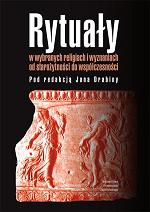Konfirmacja. Z dziejów kształtowania się protestanckiego obrzędu wchodzenia w dorosłość (XVI–XVIII w.)
Confirmation. From the History of the Making of the Protestant Adulthood Rite (16th–18th Centuries)
Author(s): Małgorzata GrzywaczSubject(s): Christian Theology and Religion
Published by: Wydawnictwo Uniwersytetu Jagiellońskiego
Keywords: study of religions; history of religions; comparative study of religions; phenomenology of religion; anthropology of religion; sociology of religion; psychology of religion; philosophy of religion; religious beliefs and behaviours; theories and methods of
Summary/Abstract: The Reformation altered the understanding of and attitude to the sacraments as had developed since the beginnings of Christianity. As in other religions, most of them were associated with a religious contribution to pivotal points in the lives of individuals and referred to a person’s specifi c biographic situation. In this respect, sacraments may be understood as a central point in rites of passage whereby an individual’s life acquires an aspect of order and is merged with a broadly understood community. The article traces the formative process of confi rmation as a rite of initiation into Christian adulthood as seen from a Protestant perspective. Confi rmation, or a strengthening in faith, derives directly from what was originally part of the ceremony of baptism. The article casts more light on the understanding and practice of baptism and the gradual emergence from it in the Western Church by the end of the 9th century of a separate sacrament known as confi rmation. As Reformation theologians departed from a sacramental understanding of confi rmation, a process began whereby former confi rmation was transformed into a ceremony marking a person’s maturity to participate in church life. Based on church teaching and catechization, a custom of public confession of faith and of „strengthening” a person in such confession became a major ceremony in churches rooted in the Reformation. The article focuses on an early stage in the changes which had, by the 16th century, been adopted as customary practice common to Lutherans, Anglican or reformed communities. The confi rmation ceremony was most helped to spread by pietism in which desires for an individual to internalize faith led to increased appreciation of confi rmation as being also important to the community which granted an individual rights to partake fully not only in church life (such as in Lord’s Supper), but also in elective, decision-making bodies in Evangelical churches (e.g. in elections of parish councils, diocesan synod, and national synod).
Journal: Studia Religiologica. Zeszyty Naukowe Uniwersytetu Jagiellońskiego
- Issue Year: 2009
- Issue No: 42
- Page Range: 85-94
- Page Count: 10
- Language: Polish

